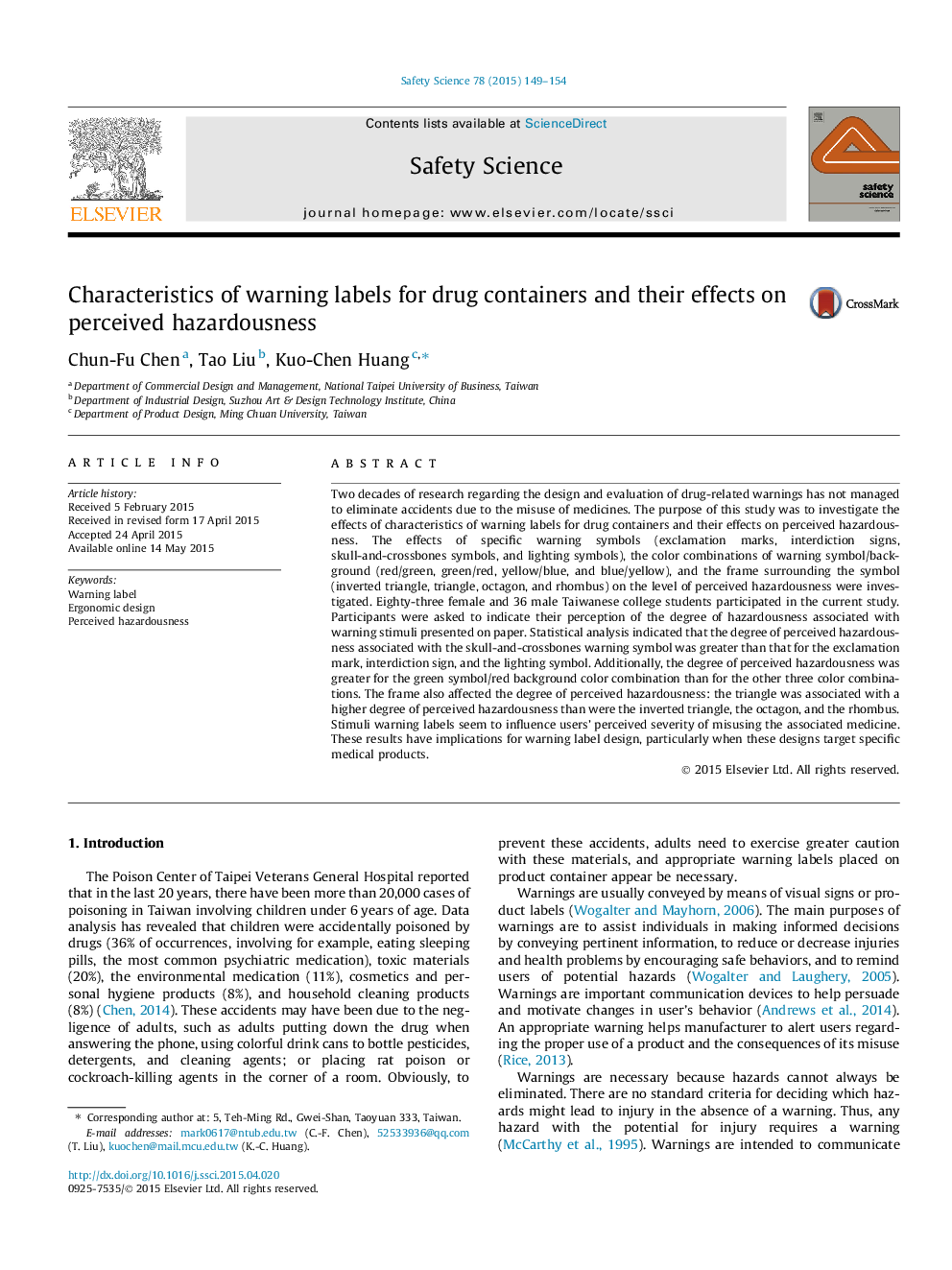| Article ID | Journal | Published Year | Pages | File Type |
|---|---|---|---|---|
| 6975748 | Safety Science | 2015 | 6 Pages |
Abstract
Two decades of research regarding the design and evaluation of drug-related warnings has not managed to eliminate accidents due to the misuse of medicines. The purpose of this study was to investigate the effects of characteristics of warning labels for drug containers and their effects on perceived hazardousness. The effects of specific warning symbols (exclamation marks, interdiction signs, skull-and-crossbones symbols, and lighting symbols), the color combinations of warning symbol/background (red/green, green/red, yellow/blue, and blue/yellow), and the frame surrounding the symbol (inverted triangle, triangle, octagon, and rhombus) on the level of perceived hazardousness were investigated. Eighty-three female and 36 male Taiwanese college students participated in the current study. Participants were asked to indicate their perception of the degree of hazardousness associated with warning stimuli presented on paper. Statistical analysis indicated that the degree of perceived hazardousness associated with the skull-and-crossbones warning symbol was greater than that for the exclamation mark, interdiction sign, and the lighting symbol. Additionally, the degree of perceived hazardousness was greater for the green symbol/red background color combination than for the other three color combinations. The frame also affected the degree of perceived hazardousness: the triangle was associated with a higher degree of perceived hazardousness than were the inverted triangle, the octagon, and the rhombus. Stimuli warning labels seem to influence users' perceived severity of misusing the associated medicine. These results have implications for warning label design, particularly when these designs target specific medical products.
Keywords
Related Topics
Physical Sciences and Engineering
Chemical Engineering
Chemical Health and Safety
Authors
Chun-Fu Chen, Tao Liu, Kuo-Chen Huang,
